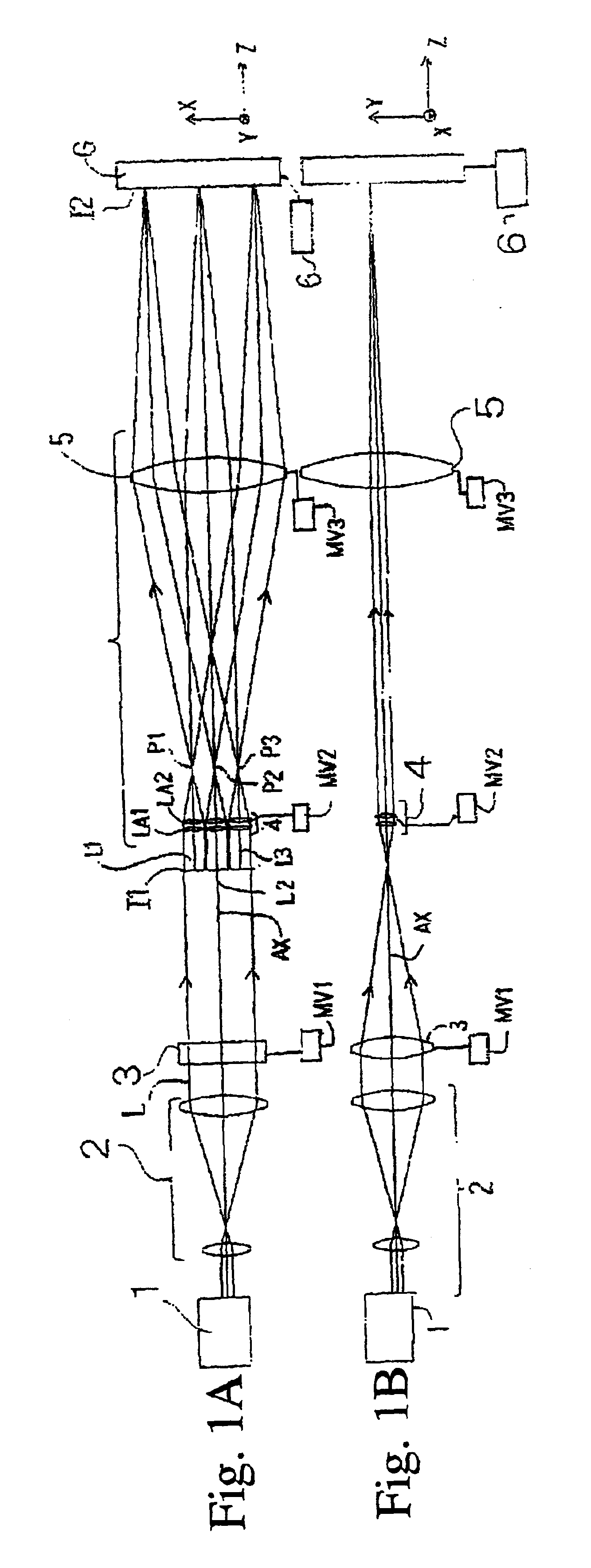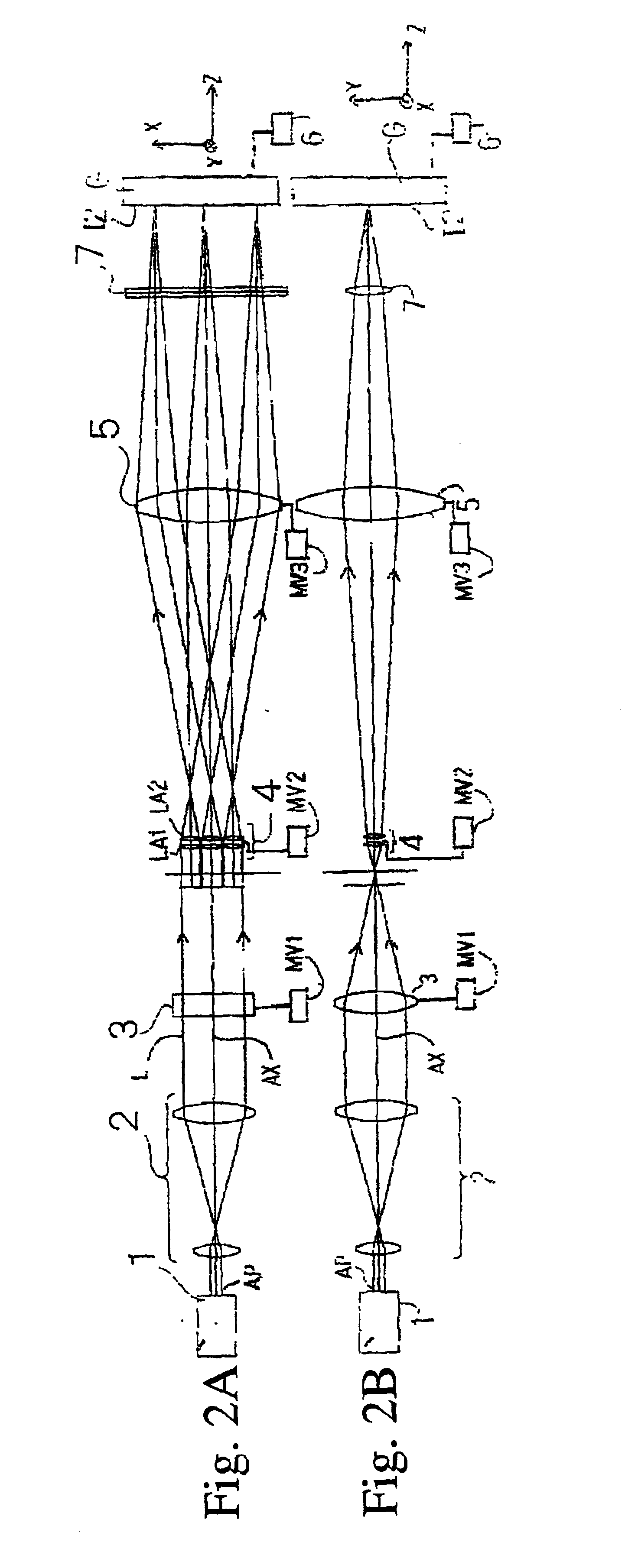Illumination optical system and laser processor having the same
a laser processor and optical system technology, applied in the field of illumination optical systems, can solve the problems of difficult manufacturing of cylindrical lenses, poor shaping precision of spherical lenses, and high manufacturing cost, and achieve the effects of superior image formation capability, excellent illumination uniformity, and large aspect ratio
- Summary
- Abstract
- Description
- Claims
- Application Information
AI Technical Summary
Benefits of technology
Problems solved by technology
Method used
Image
Examples
first embodiment
[0055]FIGS. 1A and 1B show a schematic constitution of a laser processing apparatus according to a first embodiment. A fixed laser 1 emits a laser beam which is substantially circular in cross-section, and an afocal beam expander 2 expands the ray bundle diameter of the beam, converting it to collimate light with a large diameter. The collimate light L is radiated to a cylindrical lens 3. The cylindrical lens 3 has no refractive power in the x direction (non-power face) and has positive refractive power in the y direction, which is substantially perpendicular to the x direction. Therefore, the light passes the cylindrical lens 3 and is focused on an intermediate image-forming face I1 into a line, the long side of this line being parallel to the x direction.
[0056]Here, the intensity distribution of the laser beam which is substantially circular in cross-section, emitted by the light source 1, has Gauss distribution. Since the circular beam is converted to a linear image by the cylind...
second embodiment
[0076]FIGS. 2A and 2B show the schematic structure of a laser processor according to a second embodiment. A cylindrical lens 7 has positive (convex) power, and is newly appended between the condenser lens 5 and the illuminated face I2. Since the constitution is otherwise identical to that of the first embodiment, the same reference codes are used for the same parts and the explanation of these parts is not repeated.
[0077]In the second embodiment, the linear image made by the cylindrical lens 3 is reformed on the illuminated face I2. That is, the linear image made by the cylindrical lens 3 functions jointly with the illuminated face I2. Consequently, in comparison with the first embodiment, the position of the linear image made by the cylindrical lens 3 (intermediate image-forming face) is defocused toward the lens array 4.
[0078]The cylindrical lens 7 enables the focal length in the width direction of the linear image to be changed more freely when setting the lenses.
[0079]With regar...
third embodiment
[0084]FIGS. 4A and 4B show a schematic constitution of the laser processor according to the third embodiment. A YAG laser 101 emits a laser beam which is substantially circular in cross-section, and a beam expander 102 converts the beam to collimate light which is elliptical in cross-section. At this time, the long axis of the ellipse is in the x direction, and its short axis is in the y direction. The structure of the beam expander 102 and the method of converting the cross-sectional shape of the beam will be explained later.
[0085]Subsequently, the beam enters a trapezoid prism 103 and is split into three beams radiating in different directions. The split direction matches the long direction (x direction) of the elliptical beam. The three split beams are radiated to a cylindrical lens 104. The cylindrical lens 104 has positive refractive power in the y direction, which intersects the x direction at a right angle. The shape and position of the trapezoid prism 103 are determined so t...
PUM
| Property | Measurement | Unit |
|---|---|---|
| aberration slope angle | aaaaa | aaaaa |
| refractive power | aaaaa | aaaaa |
| optical axes | aaaaa | aaaaa |
Abstract
Description
Claims
Application Information
 Login to View More
Login to View More - R&D
- Intellectual Property
- Life Sciences
- Materials
- Tech Scout
- Unparalleled Data Quality
- Higher Quality Content
- 60% Fewer Hallucinations
Browse by: Latest US Patents, China's latest patents, Technical Efficacy Thesaurus, Application Domain, Technology Topic, Popular Technical Reports.
© 2025 PatSnap. All rights reserved.Legal|Privacy policy|Modern Slavery Act Transparency Statement|Sitemap|About US| Contact US: help@patsnap.com



